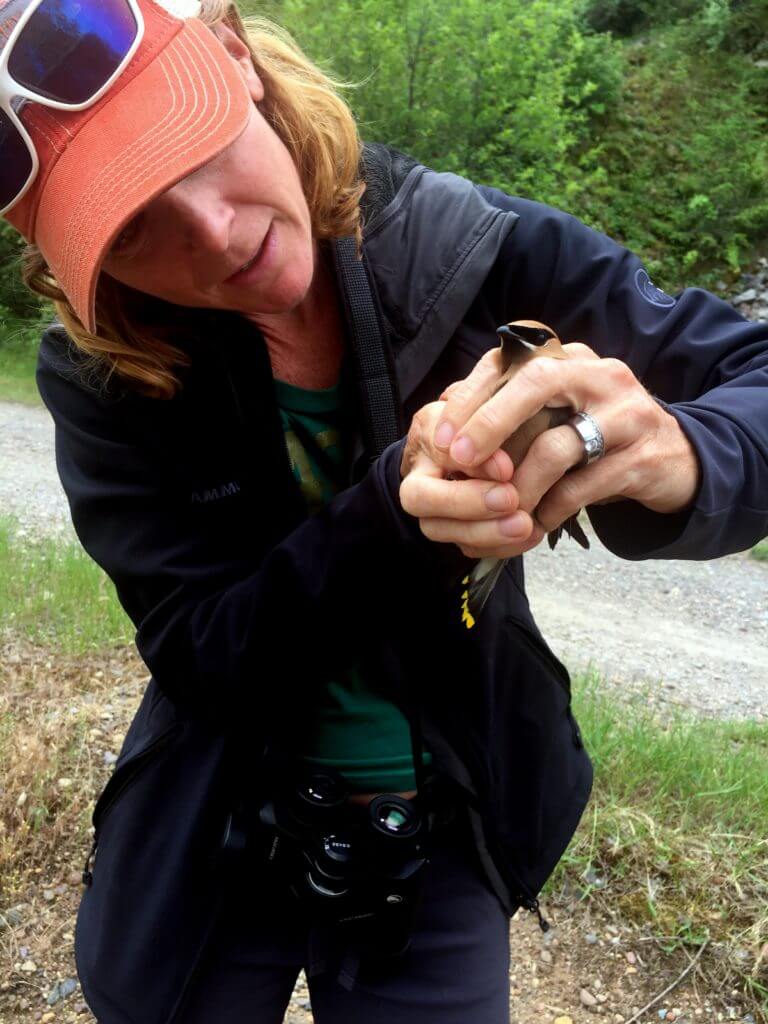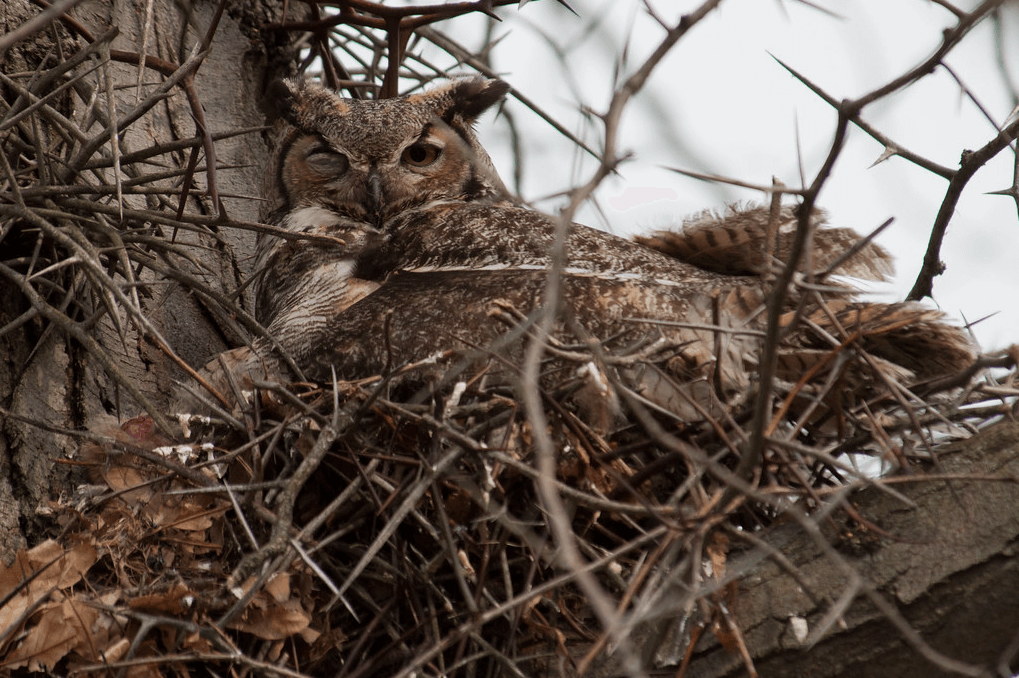by Sarah Millar
“They really are as light as a feather!” laughs one of our Master Naturalist students as she releases a robin. As you can tell, she was really excited that she got to hold a wild bird in the hand for the first time!
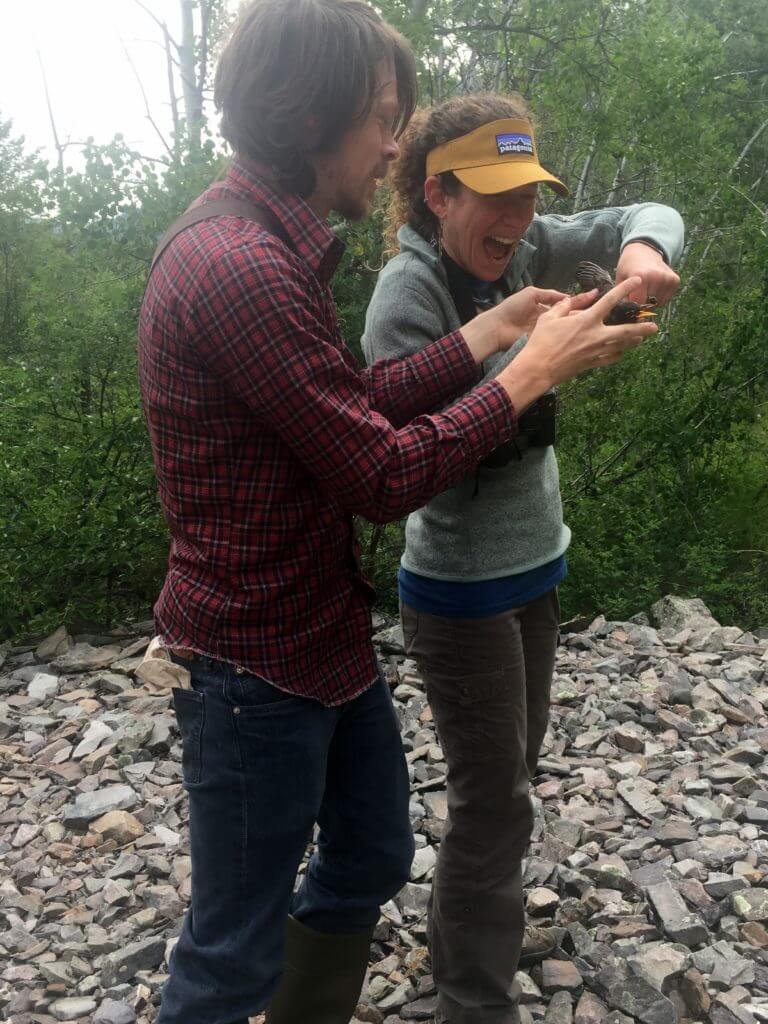
A few weeks ago, I tagged along on a bird banding day along the Kim Williams Trail with the Montana Natural History Center and the University of Montana Bird Ecology Lab’s Bird’s Eye View Education Program. According to their website, this program was developed both to address the need for more information about bird communities and to create opportunities for citizens within the Upper Clark Fork River Basin to learn about how mining has affected them. Bird banding stations provide great opportunities for the public to meet many of Montana’s birds up close, as well as provide a wealth of scientific data on the “vital rates” of birds (i.e. survival and reproduction) as part of the national MAPS (Monitoring Avian Productivity and Survivorship) research program.
We were lucky to have MNHC’s Osprey Project Coordinator, Jenélle Dowling, with us to lead our group in the bird banding trip early one June morning.
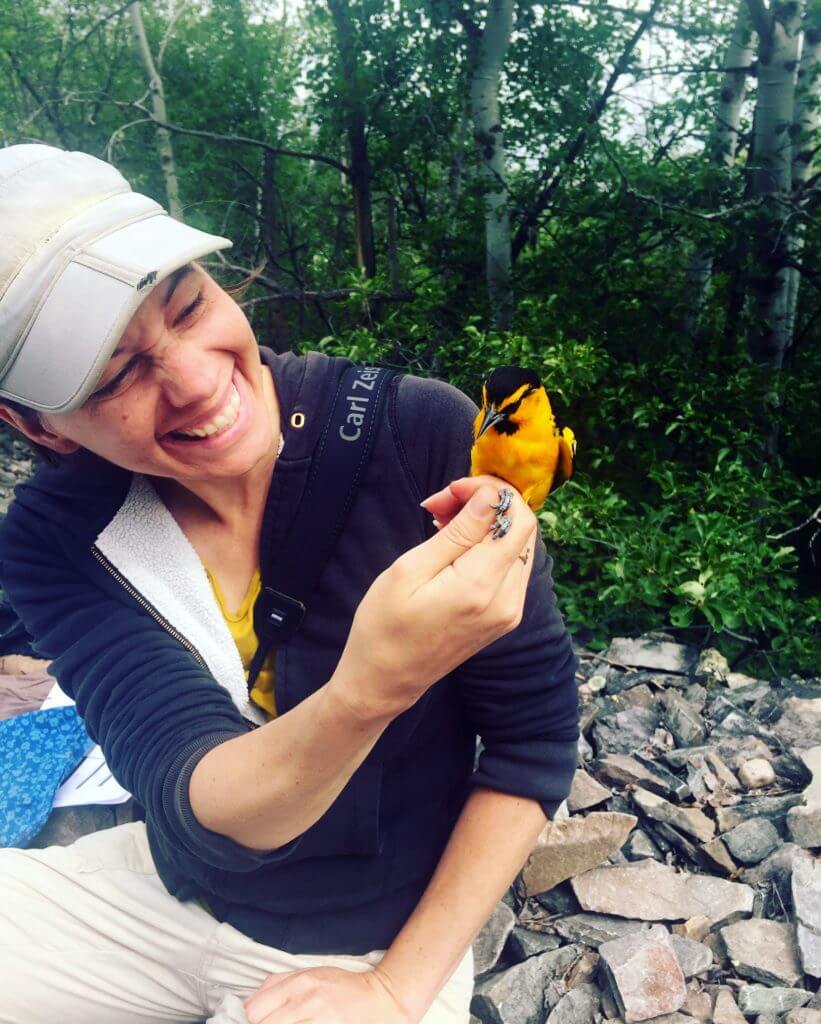
First, she showed us how to choose our location to set up our mist nets, which ultimately “catches” the birds. As we slowly walked down the trail looking for our spot, with binoculars at the ready, someone heard the call of a Bullock’s Oriole (click here to listen to their song). Due to their incredibly bright coloring, we were able to follow the sound and see one flying through the trees with our naked eyes! We were all giddy as many of us hadn’t ever seen one, and the idea that we might catch one was even more exciting. Ultimately, we chose a location in a riparian spot with some vegetation, but also in a clearing that seemed optimal for flight patterns that would allow for successful and safe captures.
After setting up our two net sites, we walked back to the trail to set up our processing and recording station. When handling wildlife, it’s imperative that you hold them for the least amount of time possible, so having an efficient and organized station is imperative! Some of the tools we used for banding include the leg bands, tools for measuring and attaching the band, scales for weighing, rulers for measuring wing lengths, and data sheets for recording.
Now we were ready to check our nets! With cloth bags in hand, we walked down to our locations with anticipation of what we might have captured. We had recently experienced a heavy rainfall, so the birds had been hunkered down for a day or two and were quite chatty and busy feeding, creating perfect conditions for bird banding.
In our first net we had captured several Grey Catbirds, an American Redstart, and a Robin. And to our delight we captured a Bullock’s Oriole and several Cedar Waxwings in the second net.
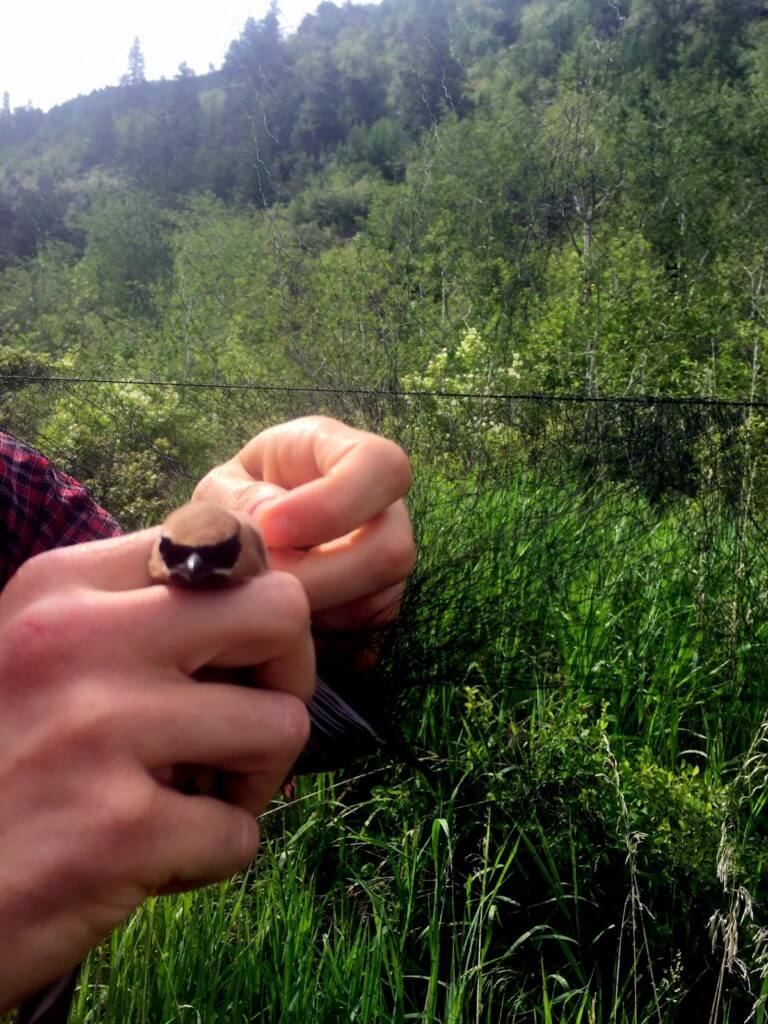
As we moved efficiently through processing each bird and recording data, I observed that it’s more difficult to determine the age and sex of birds than I thought. Couldn’t you just tell by its bright colors (male) and drab colors (female)? Well, not quite. Ornithologists use several characteristics to sex and age birds in the field: molt and plumage patterns, skull ossification (a method used to determine immature from mature birds), and cloacal protuberance and brood patch (only present on adults during breeding season).
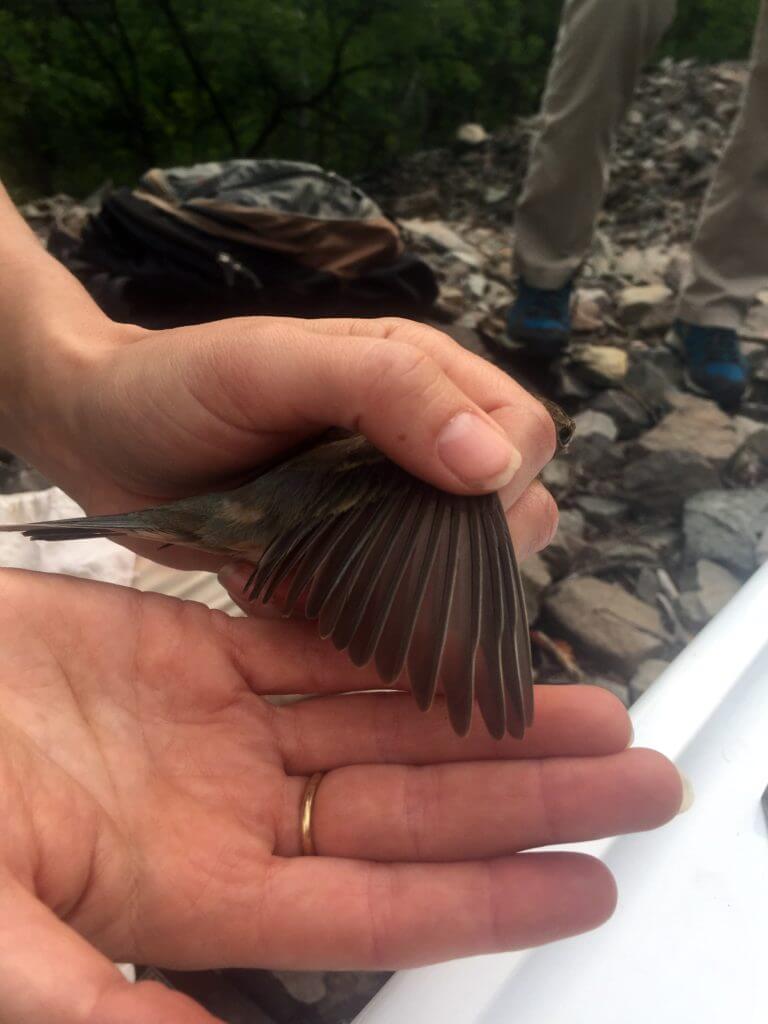
Another observation was how brilliant and gorgeous the feather colors are up close. Like the yellow stripe on the tail of a Cedar Waxwing, the bright rusty-colored patch on the underside of a Grey Catbird, or the brilliant color palette of a Bullock’s Oriole’s feathers. You can certainly see all of these colors through binoculars, but they’re even more impressive when investigating them in your hand.
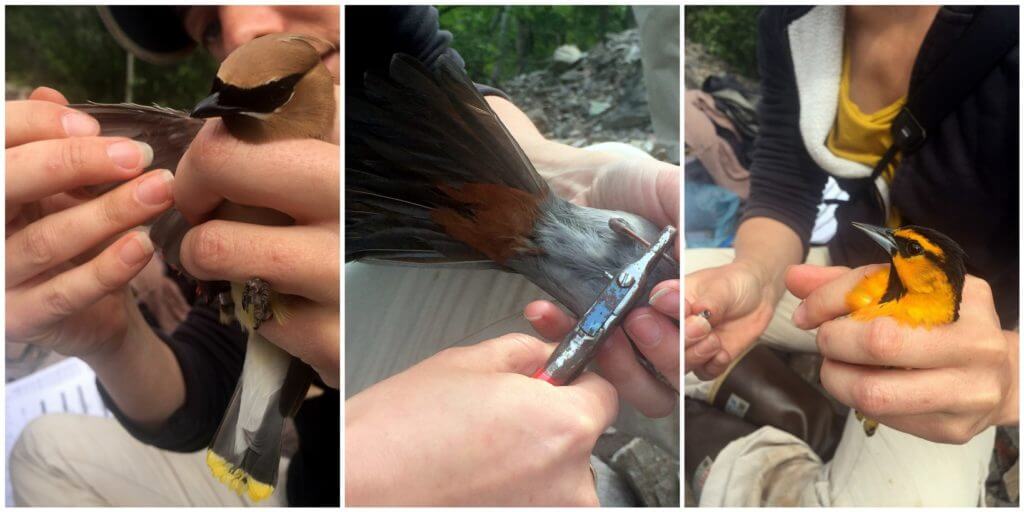
Other species that we saw along the river trail that morning: Yellow Warblers, Western Wood Peewees, and Calliope Hummingbirds. When you get out on the trail with binoculars and start watching, it’s amazing to see how many migrant songbirds we have here in the spring and summer months. A lot of our songbirds migrate to Mexico or Central America in the winter, but spend the summer here in gorgeous Montana along our creeks and rivers. These warm months are a great time to go birding!
If you’re interested in bird banding, you don’t have to go far to experience a bird in the hand! Check out these bird banding opportunities (open to the public!) through UM’s Bird Ecology Lab: http://hs.umt.edu/birdecologylab/what-we-do/education/banding.php
